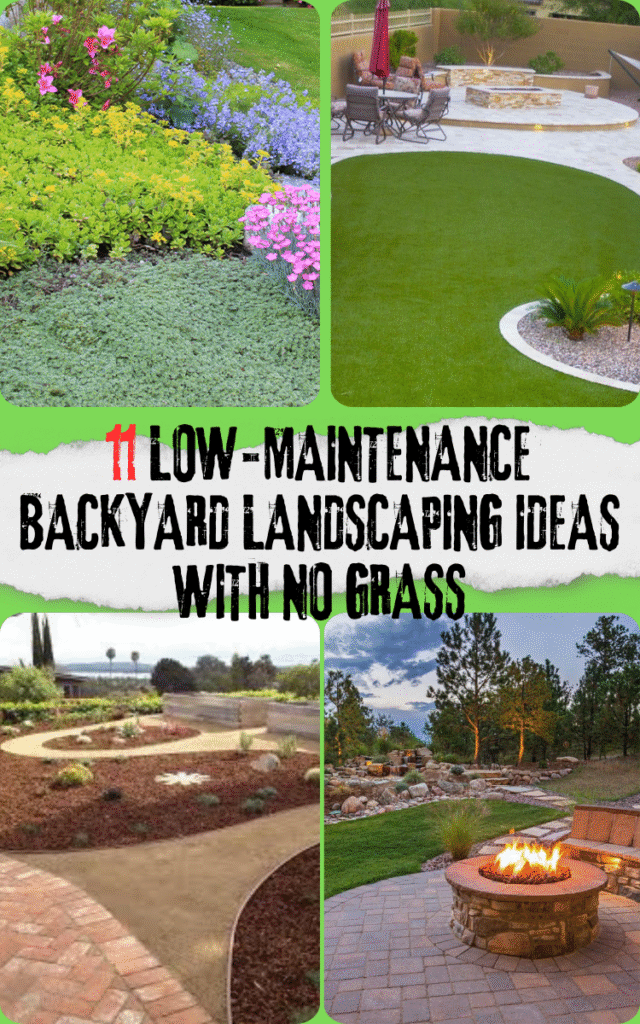
There’s something freeing about stepping into a backyard that doesn’t come with the endless cycle of mowing, watering, and fertilizing. Lawns can look beautiful, but they’re demanding, expensive, and often not the most eco-friendly choice. More homeowners are deciding that grass isn’t worth the effort, and they’re discovering just how many creative ways there are to design a backyard without it.
What surprised me when I started exploring grass-free landscaping was how much more personality a yard can have when you let go of the traditional lawn. Instead of being limited to green blades that constantly need trimming, you can bring in textures, colors, and layouts that better match your lifestyle. The result is a yard that not only looks great but is also incredibly easy to care for.
If you’ve been thinking about making your backyard more functional, stylish, and low-maintenance, here are eleven ideas that show you just how much potential a grass-free space can have.
1. Gravel & Stone Landscapes

Gravel is one of those underrated landscaping materials that instantly transforms a backyard with very little effort. Spread over a large section, it creates a clean, minimalist look, and if you combine it with stepping stones or larger rocks, you can add depth and texture. The best part is that it’s easy to maintain—lay down a good weed barrier underneath, and you’ll barely have to touch it again.
Another great thing about gravel is the variety. You can go with pea gravel for a soft, rounded texture, river rock for a natural vibe, or decomposed granite for a smoother, more modern appearance. Each type brings a different mood, so you can customize the look to match your home’s style.
I’ve seen people use gravel to build serene seating areas under a tree or as a base for a fire pit. Others mix it with succulents or raised beds to balance hard textures with greenery. It’s budget-friendly, flexible, and perfect for anyone who wants a no-fuss ground cover that still feels intentional.
2. Paved Patio with Outdoor Seating
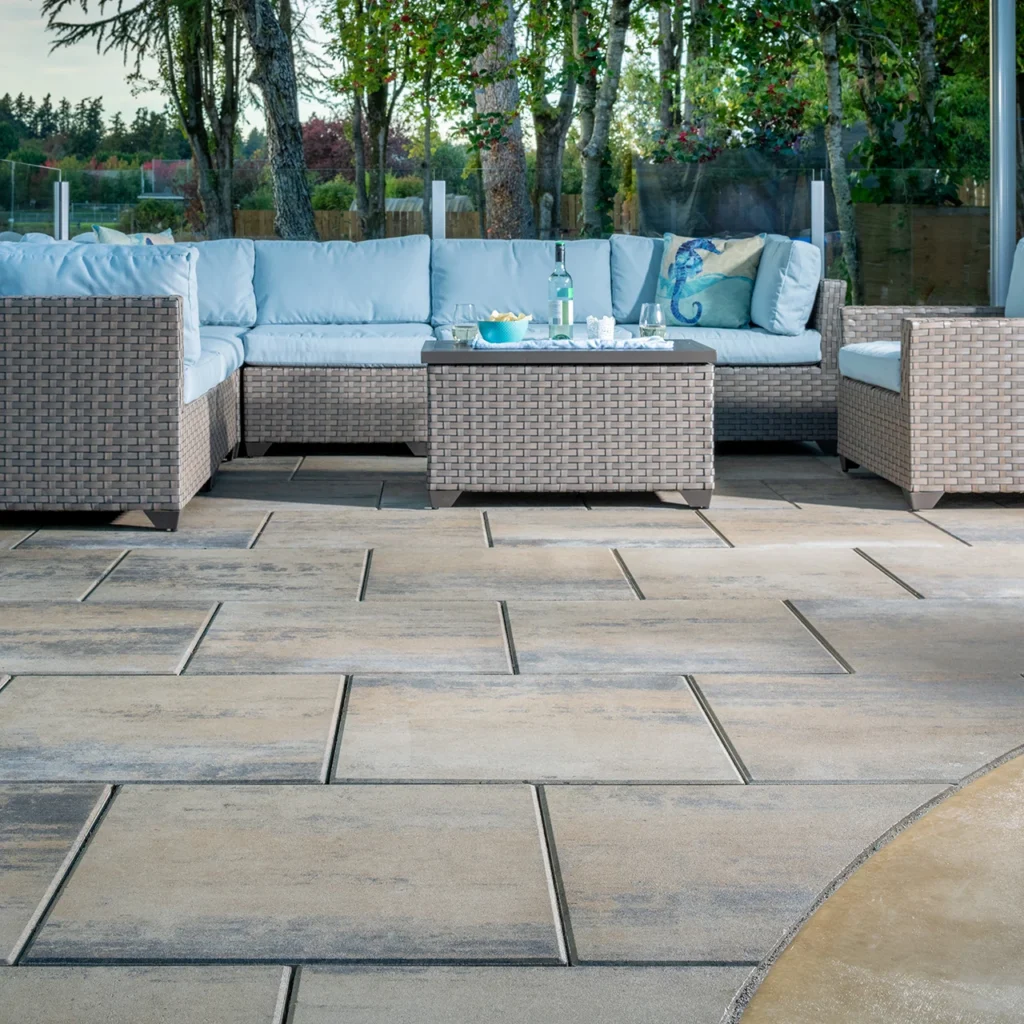
If you enjoy hosting friends and family, turning your backyard into a paved patio is a smart way to ditch the grass. A well-laid patio instantly gives you a sturdy surface for outdoor furniture, grills, or even an outdoor dining set. You don’t need to think about muddy shoes, uneven ground, or patchy lawn spots—it’s usable year-round.
Patios can be as simple or as elaborate as you want. Stone pavers bring a rustic, timeless feel, while poured concrete or stamped concrete can create a more modern aesthetic. Brick patios are another classic option, offering a cozy, charming look that works especially well with cottage-style homes.
What makes patios so appealing is how easy they are to personalize. Add planters with bright flowers, an outdoor rug to define your seating area, or even string lights for evenings outdoors. Once it’s set up, you’ll find yourself spending a lot more time outside since the space feels like an extension of your living room.
3. Artificial Turf
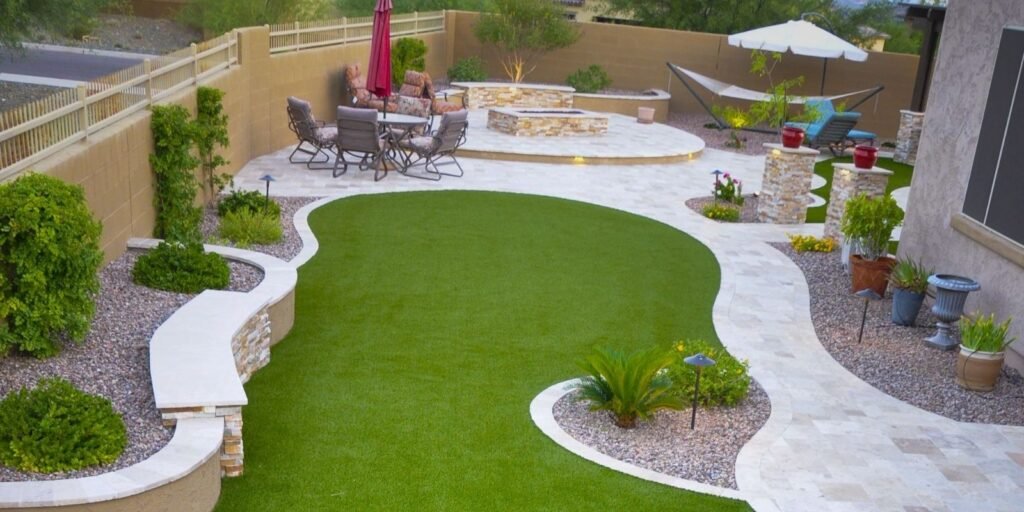
For anyone who loves the look of a lawn but hates the upkeep, artificial turf is a clever compromise. Today’s synthetic grass is surprisingly realistic, with softer fibers, varied shades of green, and even a bit of thatch mixed in for authenticity. It looks lush year-round, doesn’t need watering, and never needs mowing.
Artificial turf is particularly practical for families with kids or pets. You still get that cushy, play-friendly surface without worrying about muddy paw prints or bald patches. It also stands up well in climates where keeping natural grass alive feels impossible.
The key is to invest in high-quality turf. Look for UV-resistant options so the color doesn’t fade, and consider professional installation if you want it to last. While the upfront cost is higher, the savings on water, fertilizer, and lawn equipment make it a worthwhile investment over time.
4. Mulch or Bark Landscaping

Mulch isn’t just for garden beds—it can also replace entire sections of lawn. A yard covered in bark or wood chips has a warm, earthy feel that blends beautifully with trees and shrubs. Plus, mulch has the practical benefit of locking in soil moisture and suppressing weeds, which makes it a favorite for low-maintenance gardeners.
Depending on the look you want, you can choose from different types: shredded hardwood mulch for a natural vibe, cedar mulch for its bug-repelling qualities, or bark nuggets for a chunkier texture. Each one weathers differently over time, so the yard slowly evolves while still looking tidy.
I like using mulch as a backdrop for statement features—like a raised garden bed, a water feature, or even just a cluster of oversized planters. Since mulch is soft underfoot, it’s also a great choice for pathways in kids’ play areas. The only upkeep is topping it off every year or two to keep it fresh.
5. Ground Cover Plants

If you want something green but don’t want to commit to mowing, ground cover plants are an excellent alternative. Creeping thyme, sedum, and clover are some of my favorites—they spread easily, stay low, and don’t require the constant upkeep that turf does. Some even give off a lovely fragrance when stepped on.
Ground covers are also incredibly hardy. Many varieties tolerate drought, poor soil, and even heavy foot traffic. They create a living carpet that changes with the seasons, adding small flowers, rich greens, and interesting textures without much work.
The fun part is experimenting with different plants to create a patterned or patchwork effect. I’ve seen yards where creeping thyme forms pathways bordered by moss or clover, and it looks enchanting. With a little planning, you can design a lush, walkable lawn that feels like a natural meadow.
6. Xeriscaping with Drought-Tolerant Plants
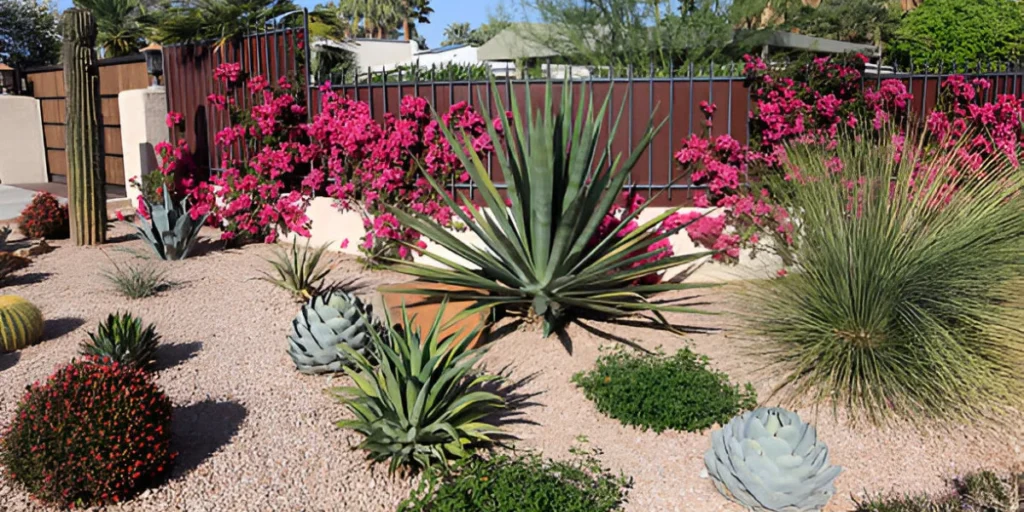
Xeriscaping is ideal for anyone who lives in a dry climate or wants to be mindful of water use. Instead of forcing grass to survive in less-than-ideal conditions, you embrace hardy, drought-tolerant plants that thrive with minimal care. Think succulents, agaves, lavender, and ornamental grasses.
The beauty of xeriscaping is the variety of shapes and textures. Tall spiky plants pair beautifully with rounded succulents, while pops of lavender or sage bring color and fragrance. Combine them with gravel, rocks, or even driftwood, and you end up with a striking, desert-inspired design.
One of the best parts of xeriscaping is how little maintenance it needs once established. After the first season of helping plants settle in, they practically take care of themselves. It’s a landscaping style that feels artistic but doesn’t demand constant attention.
7. Raised Garden Beds & Planter Boxes
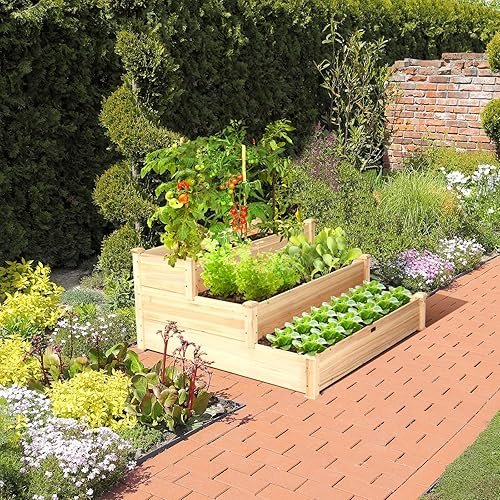
Replacing a grass lawn with raised beds gives your backyard purpose and charm. You can grow vegetables, herbs, or ornamental flowers while enjoying neat, organized plots. Raised beds make gardening easier too—you don’t have to bend as much, and you get better control over soil quality.
Planter boxes are a great option if you’re short on space or want something more flexible. They can be arranged around a patio, used to border pathways, or grouped together for a mini urban garden. The best part is they’re portable, so you can rearrange them when you feel like a change.
I’ve noticed that raised beds also give a yard a cozy, crafted look. They turn a flat, grass-filled yard into something layered and interesting. Add a few trellises or climbing plants, and the whole space feels alive and purposeful.
8. Decking (Wood or Composite)

Decking instantly transforms your backyard into a true outdoor living area. Instead of spending weekends mowing a lawn, you could be relaxing on a deck with a cup of coffee or hosting a barbecue. A raised deck also adds dimension, breaking up a flat yard with levels.
Natural wood decks bring warmth and classic beauty, though they require a bit of maintenance. Composite decking, on the other hand, offers the same look with far less upkeep—it resists fading, warping, and staining, making it ideal for a low-maintenance lifestyle.
Once your deck is in place, it’s easy to make it feel like an extension of your home. Add lounge chairs, a dining table, or even a pergola for shade. The right setup makes your deck the best “room” in your house, only without walls.
9. Pebble Mosaic or Decorative Stonework

If you enjoy a touch of artistry, a pebble mosaic or decorative stone design is a beautiful way to replace grass. These designs can be as simple as a patterned pathway or as elaborate as a full mosaic patio. The stones create visual interest and bring an element of craftsmanship to your yard.
Pebble mosaics look especially striking when paired with greenery or water features. The contrast of natural stones against plants gives a balanced, organic feel. Even a small section of mosaic around a fountain or bench can serve as a focal point.
What’s nice is that this type of landscaping is both functional and decorative. You’re not just creating a pretty design—you’re also eliminating the need for mowing, watering, and fertilizing. With the right sealant and occasional sweeping, the mosaic will last for years with minimal upkeep.
10. Water Features & Rock Gardens
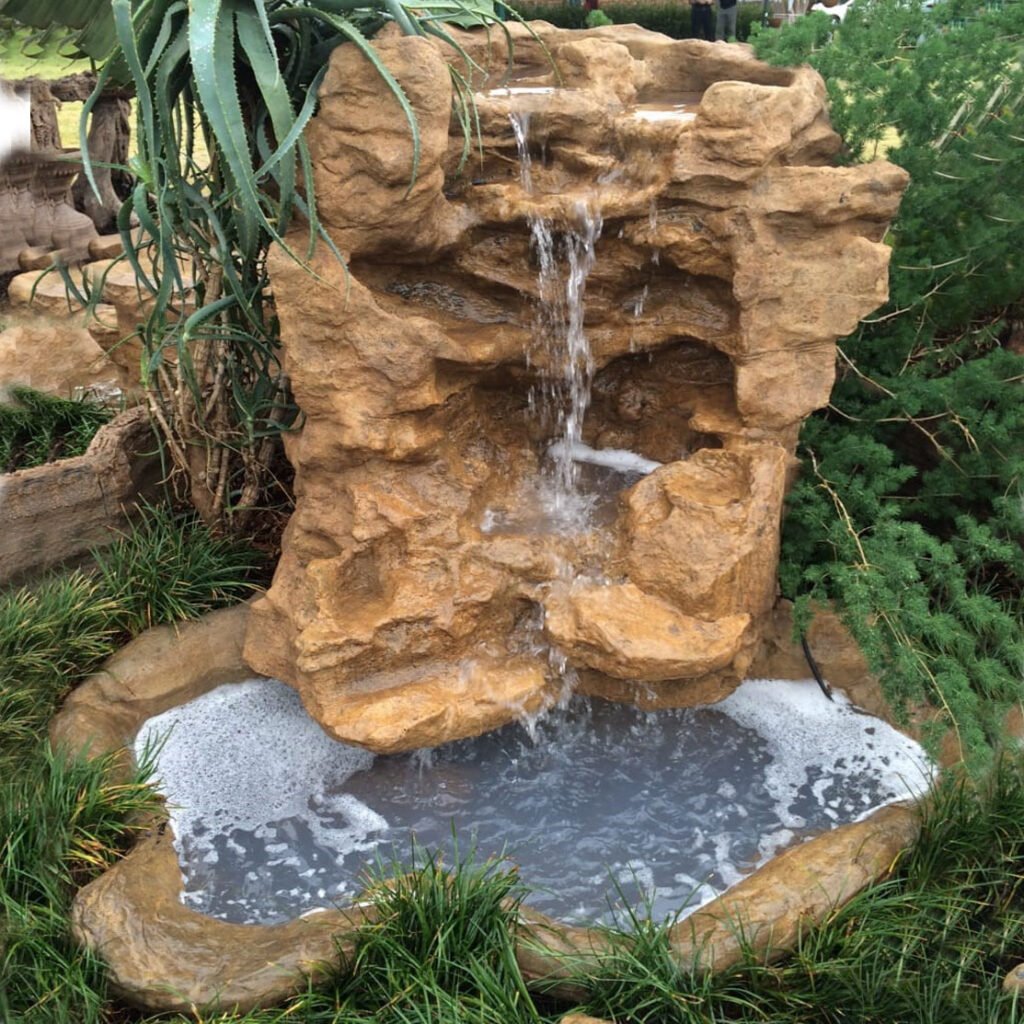
There’s something soothing about the sound of water in a backyard. Adding a pond, fountain, or even a simple birdbath replaces a patch of lawn with a feature that brings peace and movement. Rock gardens offer a similar effect, using stones, boulders, and carefully chosen plants to create a serene landscape.
Water features attract birds and pollinators, making your yard more lively and connected to nature. Rock gardens, meanwhile, give structure and texture without requiring much water or care. Both options are great for people who want a backyard that feels like a retreat.
The best part is that once these features are in place, they need very little from you. A pump to circulate water or a layer of mulch to keep weeds down is usually enough to keep things looking great. They add character and tranquility without the maintenance headaches of grass.
11. Outdoor Living Zones (Fire Pit, Kitchen, or Lounge)
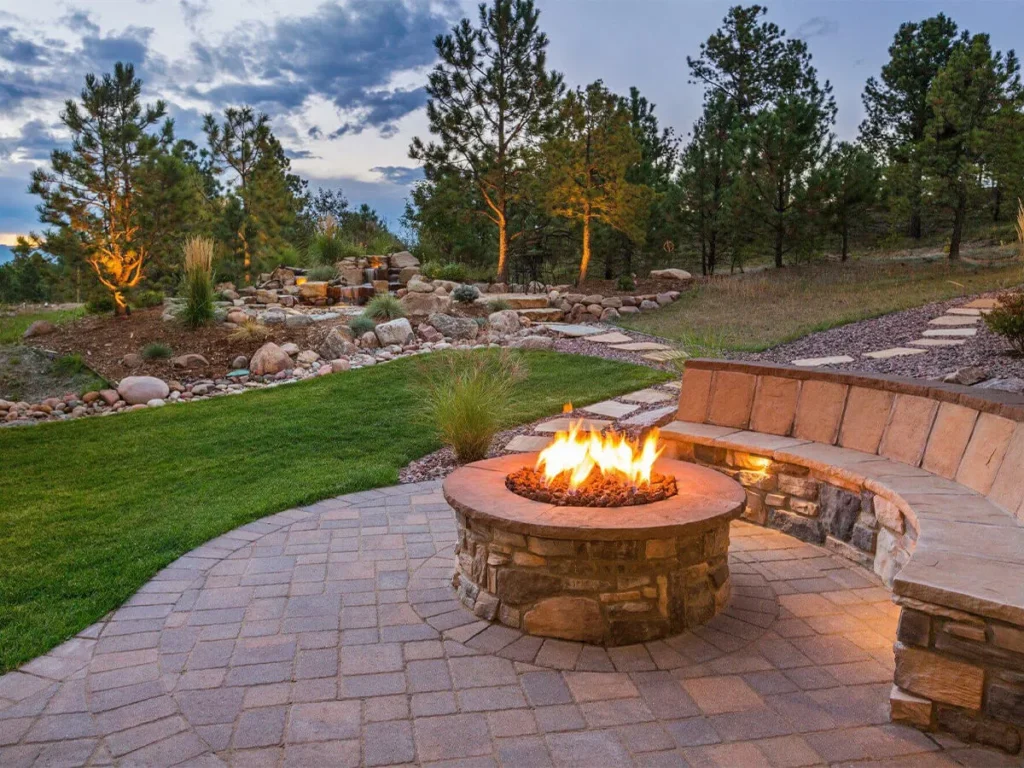
Instead of grass, think of your backyard as an extension of your home. Creating zones for relaxation and entertainment turns unused lawn space into something functional. Fire pits, outdoor kitchens, or covered lounge areas are all perfect for year-round enjoyment.
You don’t need a huge space to make this work. A small gravel area with a fire pit and a few chairs can become the heart of your backyard. Larger spaces can accommodate full kitchens or shaded pergolas with seating. The flooring—whether pavers, gravel, or decking—keeps it maintenance-free.
The great thing about outdoor living zones is how much they enhance your lifestyle. They encourage you to spend more time outside, share meals with loved ones, and enjoy your yard in ways a lawn simply can’t offer. It’s not just landscaping—it’s creating experiences.
Wrap Up
A backyard without grass doesn’t have to feel empty—in fact, it often feels richer and more personal. By stepping away from the traditional lawn, you open up endless possibilities for design, function, and creativity. From gravel and ground covers to raised beds and fire pits, there are options for every style and lifestyle.
The beauty of these ideas is how little upkeep they demand. Once you’ve set up your grass-free space, you can spend less time working on your yard and more time enjoying it. It’s a shift that turns your backyard into a true sanctuary—practical, beautiful, and uniquely yours.

